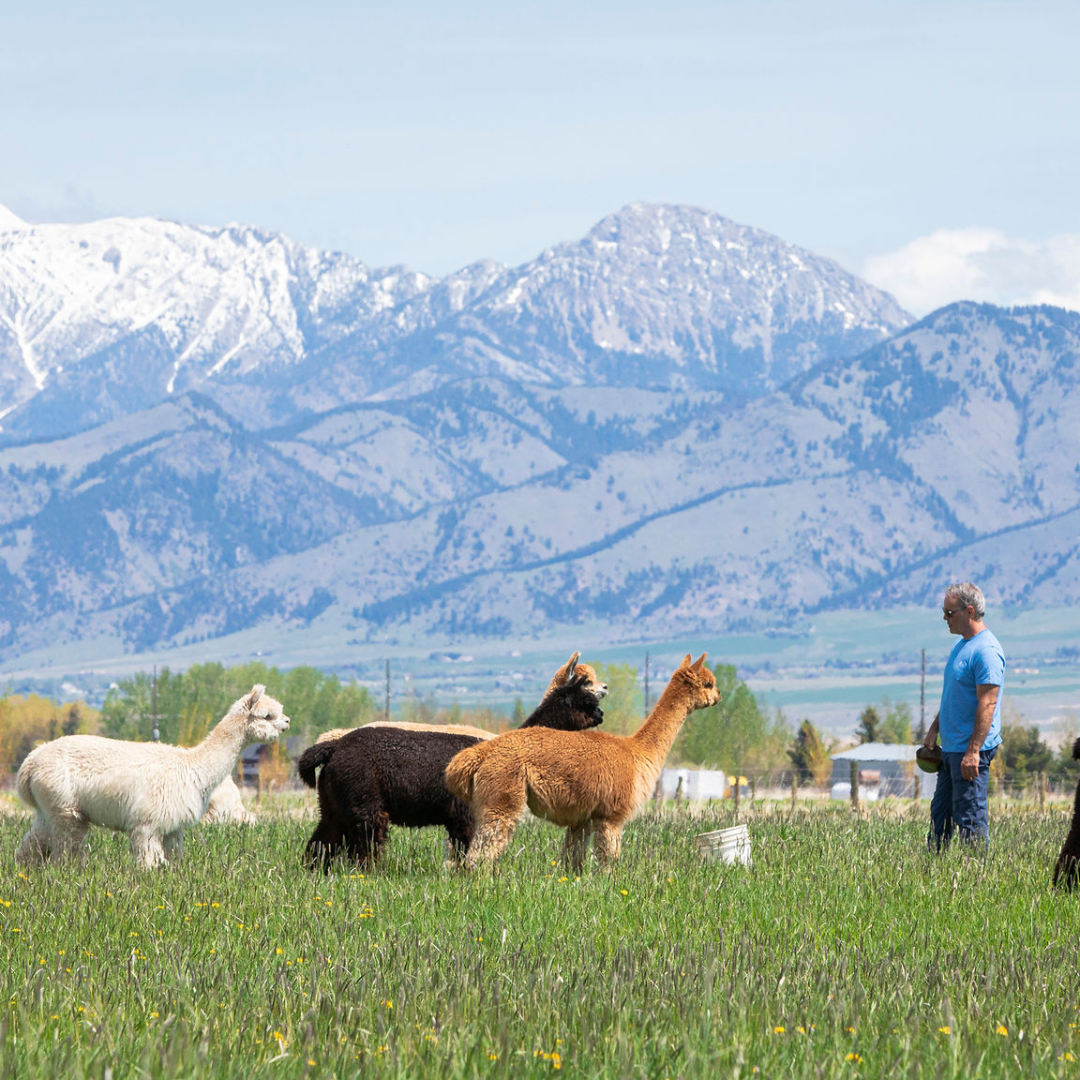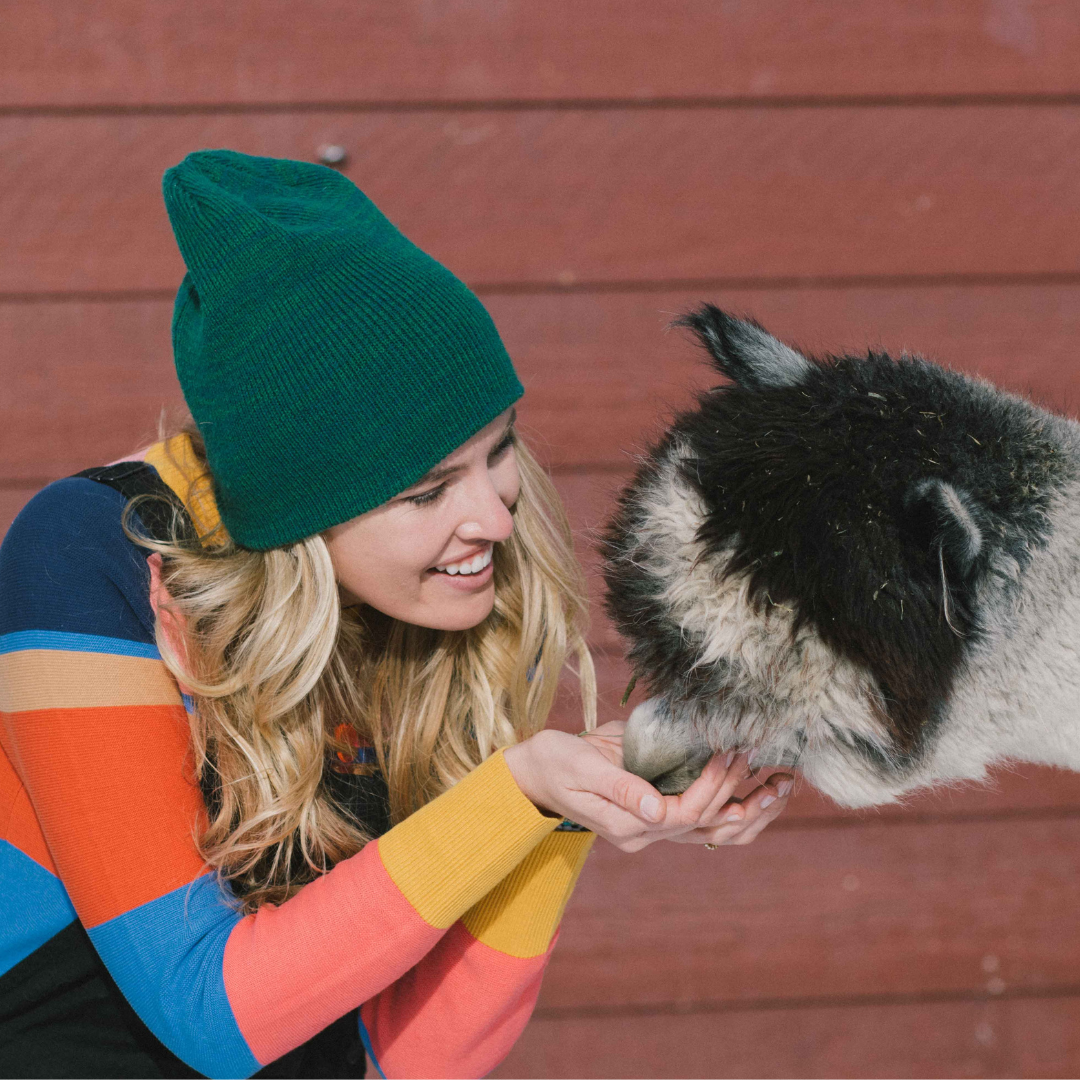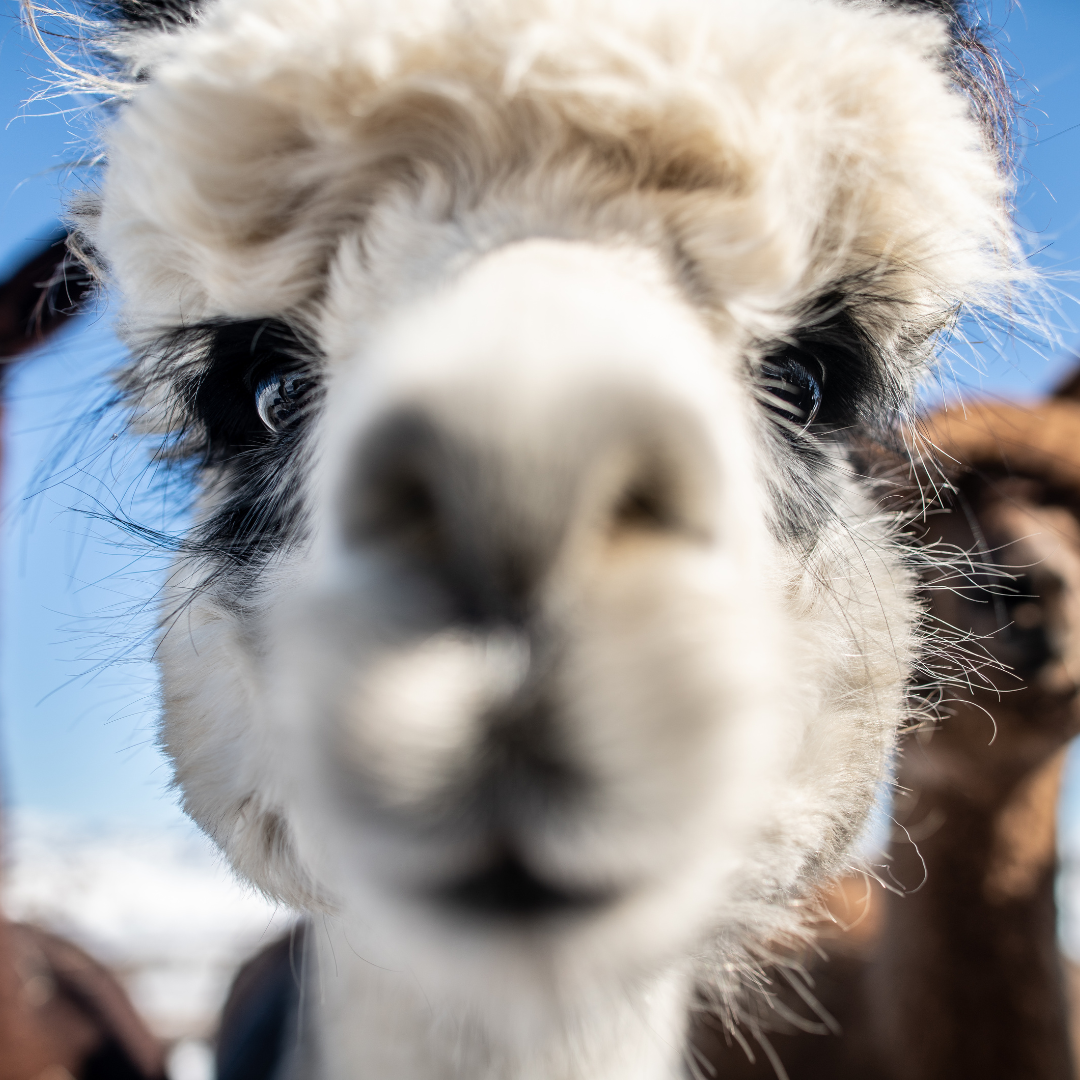Weaning Your Cria
by Ann Haldane
Weaning can be an extremely stressful time for dam, cria and owners! However, we often make it more traumatic for allconcerned because of lack of thought and planning. While most cria are ready for physical weaning at 6 months old,
both they and their mother have a strong emotional bond.
Do not assume that weaning will always occur naturally if the pair are left together. Many new owners assume that a pregnant mother will cease to feed her cria as it grows older, or that the cria will take that step. It usually doesn’t happen! Experience industry-wide has shown that not only will cria not wean themselves, but that the subsequent cria is placed at risk by allowing older cria to remain with mother – with death by starvation occurring when the older cria steals the colostrum or milk the cria needs. Also, the mother’s welfare requires her to “dry off” for 5-6 months before the birth of her next cria- it is extremely draining on a females vitality to maintain an advanced pregnancy plus feed a large cria.
Once the decision to separate the cria is made, it is removed from the mother to a place where he is in the company of familiar alpacas. It is preferable that the cria is out of sight and sound of its' mother, however, if you have a small property this may not be possible. In this instance, keep at least two fences between them (so you have a paddock separating them). Another alternative – providing you have higher than average fencing such as camelid or deer fencing (a cria will climb or jump over a normal height fence in order to get back to mum) – you may be able to wean him/her within visual distance of the mother. Even so, this is not as good as complete separation as the cria will mope over the fence, and take much longer to accept the separation. The risk of an alpaca becoming entangled in a fence when only one fence separates the pair must also be taken into account.
If you are unable to adequately separate cria and mother on your property, it may pay to remove the cria from your property altogether – the Alpaca Place offers a weaning and halter training service to its customers – and bring the cria back after 6 – 8 weeks when weaning has been achieved. Most females will not allow a weaned cria to feed after this period of time –however, there are some who will allow their cria to start suckling again, so you must be vigilant that this does not happen. If it does, simply separate mother and cria again – the grieving process will have been completed and most cria will no longer attempt to scale a fence between them and Mum, so there should be no need to take them off your property if you can’t get at least two fences between them.
As soon as you are sure the mother is not allowing the youngster to feed, they can be reunited. The baby is now independent in terms of food, but still has the security of a mother to rest by and the mother is usually happy to have the company without the demands of feeding; this creates an emotionally stable alpaca that is an asset to your herd. However, bear in mind, that keeping an entire male in with a female herd can create the risk of an unwanted pregnancy – although most males do not become fertile until sometime after 2 years of age, it is not unknown for precocious males to sire cria at just 9 months of age! And some 6 month old males can already be attempting to mount females.
We usually maintain a separate “male” herd which includes wethers awaiting sale plus young males destined for either a stud career or wethering. This prevents the danger of unwanted pregnancies, and allows the young male to learn proper alpaca herd behaviour, and our young males join this herd as soon as they are weaned. The adult males never hurt or bully them.
If you have returned your cria to your female herd, then as birthing time for a subsequent cria approaches, it is often wise to separate the two until well after the new cria has bonded with its mother. This is because the female alpaca will start coming into milk several days before the birth of her new cria, and her yearling offspring may attempt to renew suckling – and the female, because of her changing hormones, will likely let her. You don’t want your yearling stealing the colostrum so vital for the new crias health! After the mother has bonded with her new baby, it is unlikely she will allow her older offspring to suckle, so after 3 – 7 days you can reunite the family. We have had no problem with this reunion, but every animal is different, so it pays to keep an eye on the situation until you are sure Mum is feeding only her new cria. If in any doubt, separate the older offspring again!
Remember when any form of separation occurs, alpacas need company! If you have a whether, put him in the same paddock as the animal you are weaning – this adds to the baby’s sense of security. A good-natured female can also be used for this purpose.
We are an alpaca farm with 150 quirky alpacas, 10 enthusiastic employees and thousands of amazing alpaca products. After 15 years of experience, we offer hand crafted alpaca products from local knitters, crocheters and weavers - including hats, scarves, blankets as well as high-tech alpaca socks and fabrics. We also sell composted alpaca manure as a rich fertilizer. Alpacas of Montana is a fully vertically integrated alpaca farm and we love designing high quality alpaca products.
Article Originally published in Alpaca World Magazine




































































